By Catarina Pien, Pacific Shark Research Center
One of the unique consequences of being a student at MLML is the opportunity to participate in research opportunities outside of the institution. Many alumni from MLML end up working at surrounding research agencies and organizations, and thus will turn to the lab to look for students to help out with various projects. For example, while being a student at MLML, I have been able to participate on consulting projects and assorted research cruises, allowing me to gain valuable research experience and insight into my future career goals.
This past month, two of our ichthyology faculty members, Drs. Richard Starr and Scott Hamilton, were contacted by alumnus William VanPeeters, who now works for the California Department of Transportation (Caltrans), to work on an exciting project involving the demolition of a portion of the old Bay Bridge.
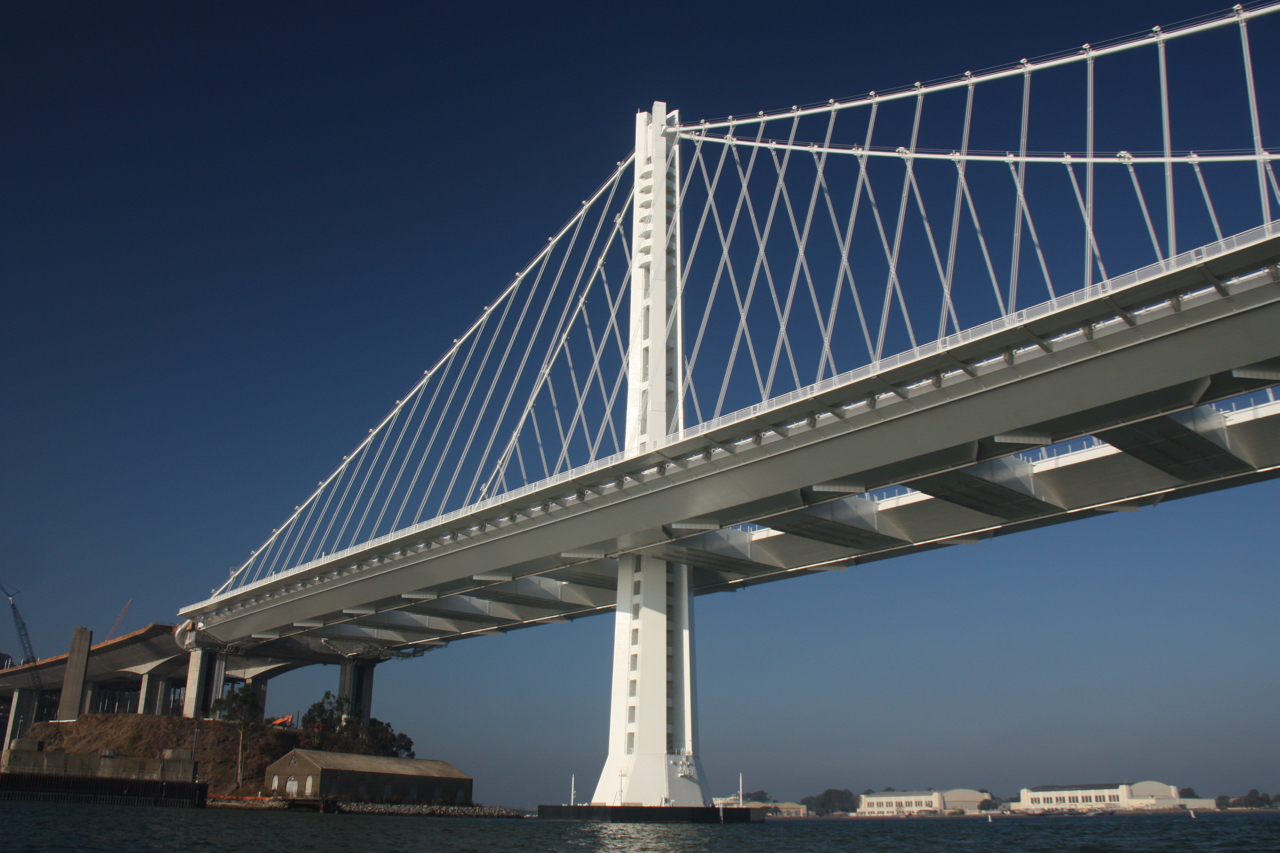
Although most of the old Bay Bridge is being taken down piece by piece using cranes and machinery, Caltrans concluded that in the case of certain underwater pier pilings from the old bay bridge, it would be more environmentally and economically sound to implode the pier(s) underwater. The project aimed to remove the largest underwater pier from the old bay bridge by using underwater microcharges to implode the concrete pier into an underwater crater, which was created using dynamite. Rubble falling outside the hole would be removed by a dredge, and an echosounder would scan the seafloor afterwards to check the remains. See here for an animation and for more information.
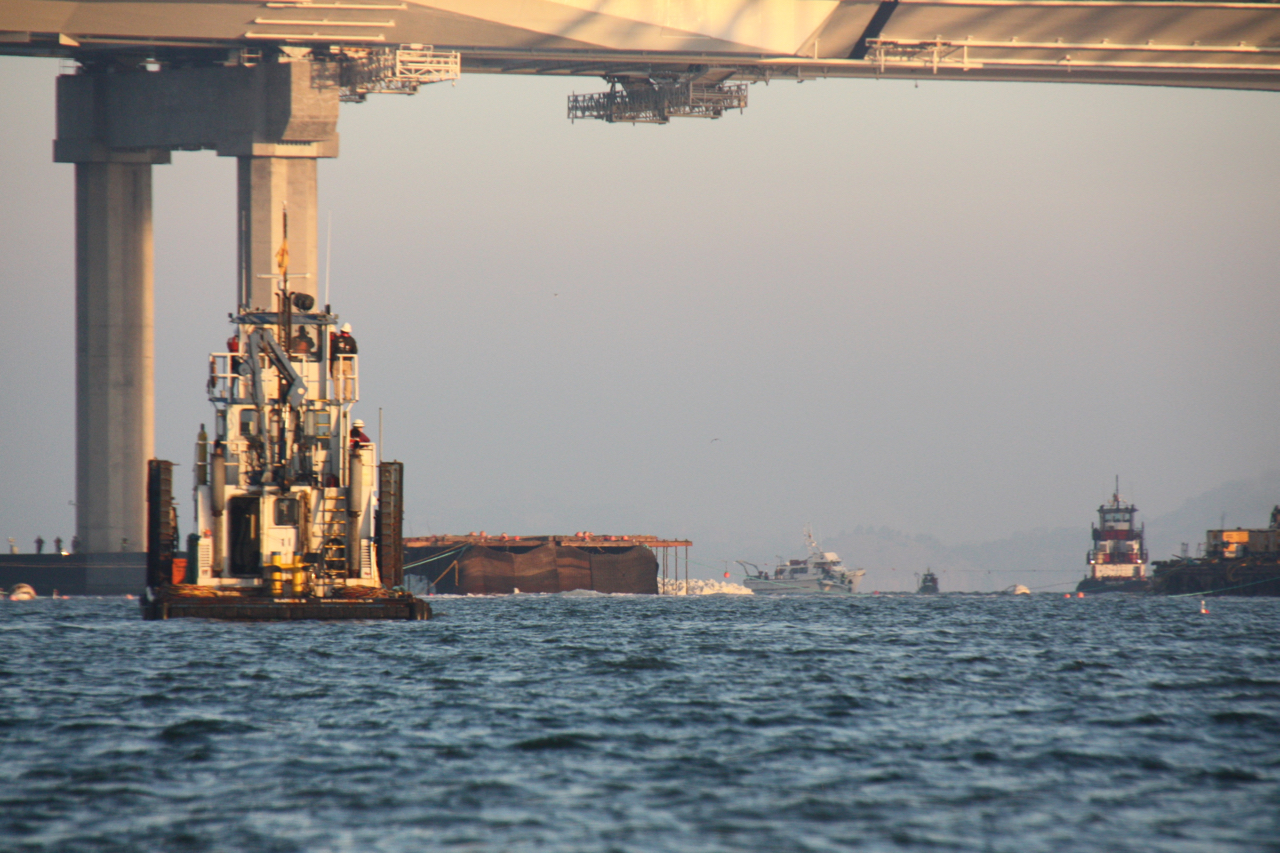
In order to assess environmental impacts, Caltrans contracted several agencies and organizations to examine fish, bird, and mammal health, as well as changes in water quality and turbidity after the blast. MLML was hired as part of the fish team to trawl for fish in the bay to describe the species and abundance of fishes impacted by the blast. Caltrans was especially concerned about endangered species, including Long-finned smelt, Green sturgeon, Herring, and Salmonids.
Drs. Starr and Hamilton recruited several ichthyology students, as well as John Douglas (MLML Small Boats Operations Coordinator), to help with otter trawling in the bay.We used two of our smaller whalers and the R/V John Martin to deploy trawls.

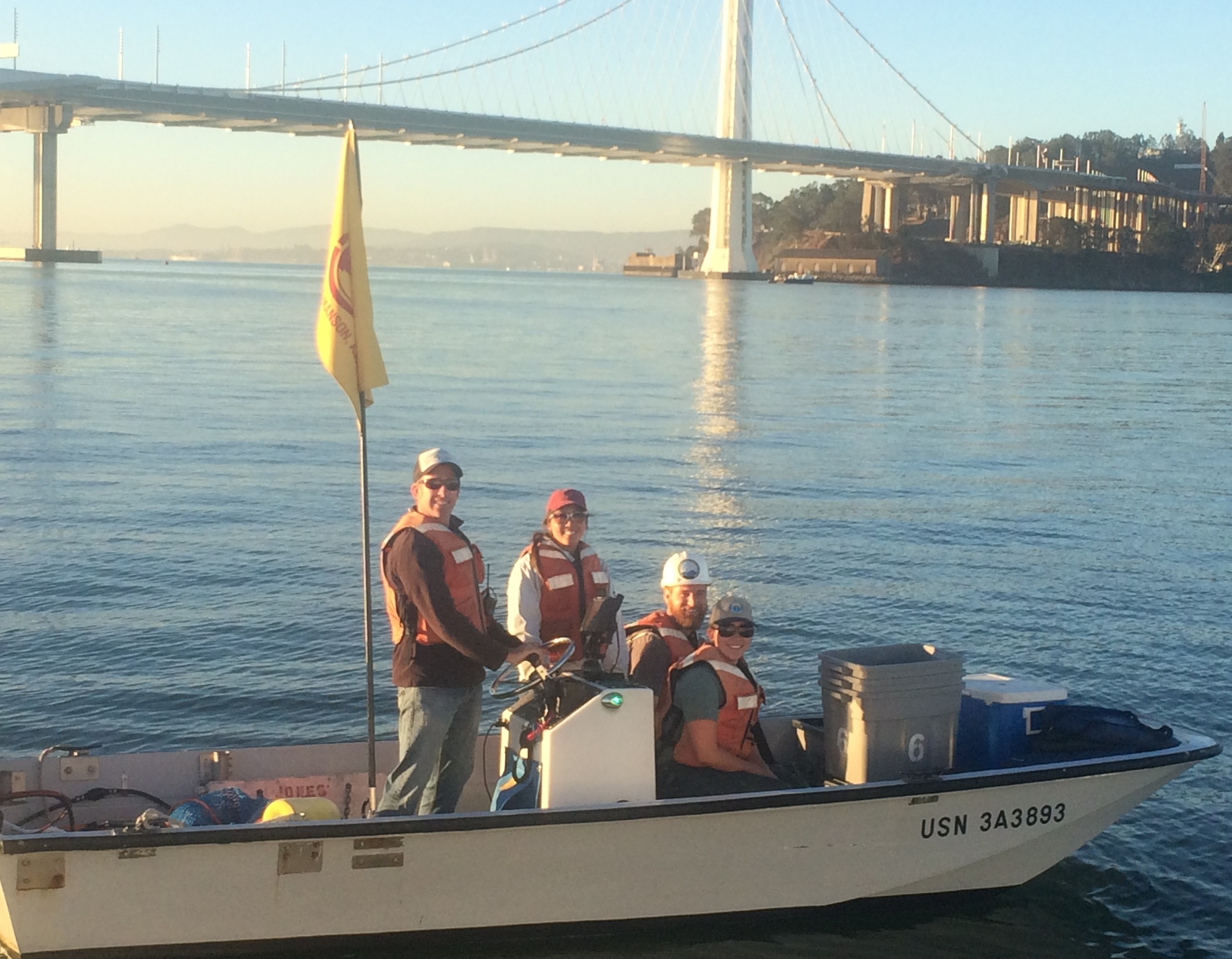
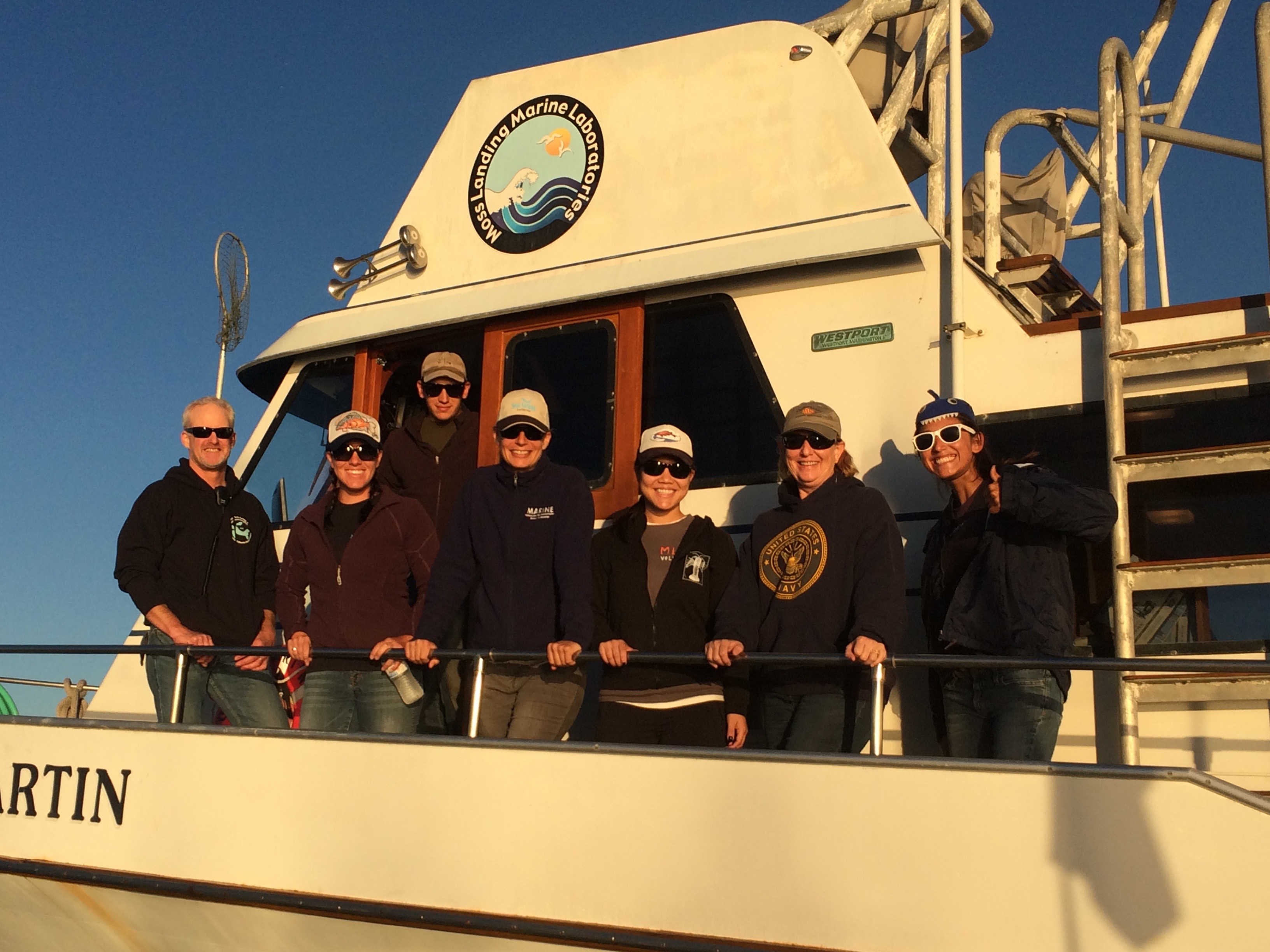
Otter trawls operate by having two doors that open up (left and right) and connect to a net. The net is weighed down by lead on the bottom, and cinched at the cod end (trailing end) by a rope. Bridles (long ropes) are connected to the doors of the net to control how deep the net drops down.
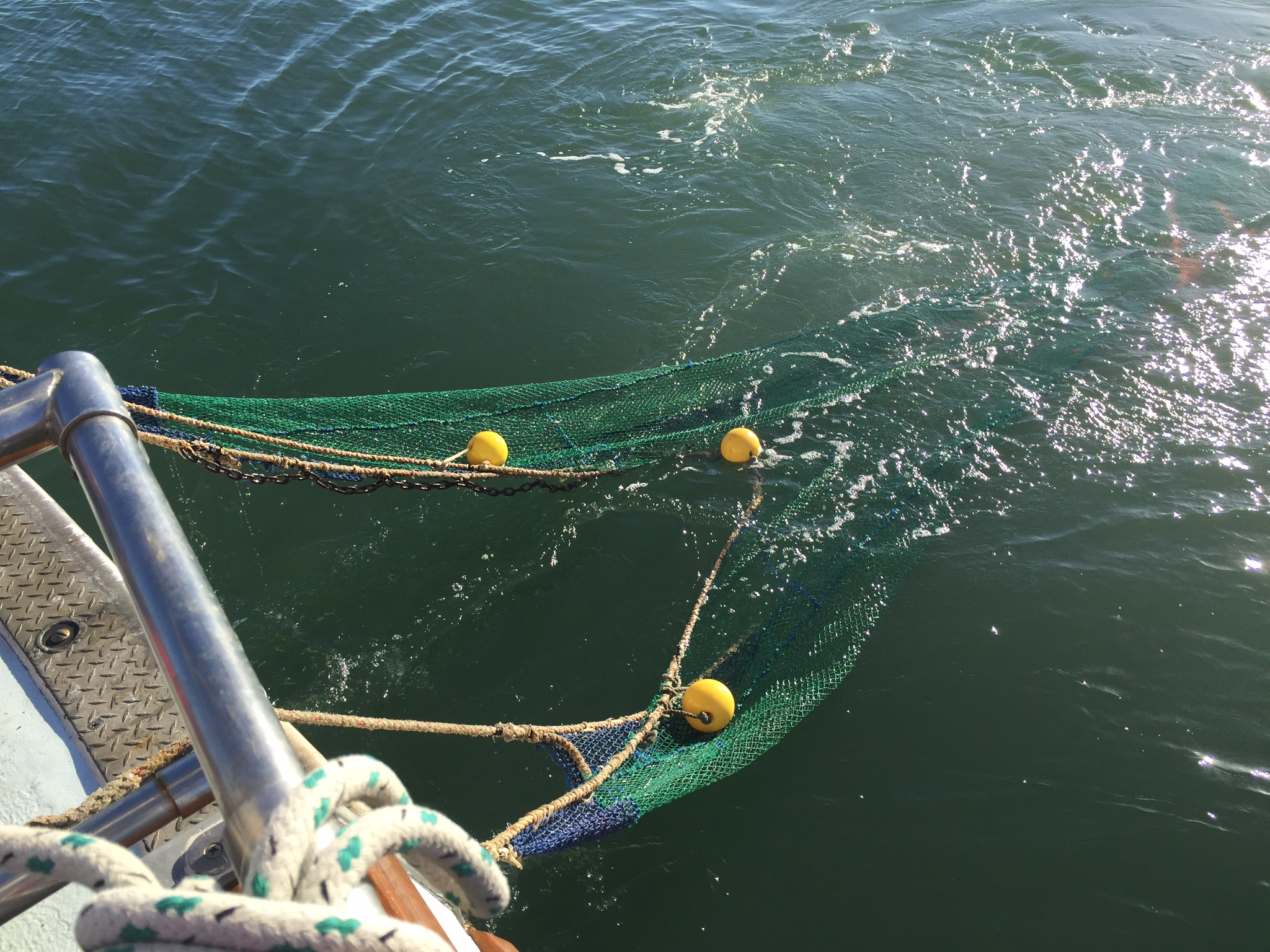
For our project, the net was let out to the bottom of the seafloor, and the boat dragged the net along the bottom for 5 minutes at ~0.5-1 knots. We tried to complete as many trawls as possible in the span of ~1 hours during slack tide (the time surrounding either high or low tide, when the water is sitting still instead of moving either in or out), since this was the safest time to trawl. We practiced once in Elkhorn Slough and Monterey Bay, then trailered two whalers and motored the R/V John Martin up to Emeryville, where we had a practice session in the actual site.

Although the blast was originally scheduled for November 7th, the project was delayed until the following week, which meant my team lost our fearless (and experienced) captain Scott to the island of Curacao (hard life of a professor!), but fellow boatmate Christian stepped up to the wheel donned with his seaworthy beard and fearless pose.

The day of the blast started off at a pleasant 5:15 AM, with our consolation prizes being both a firey sunrise and, of course, the blast itself.
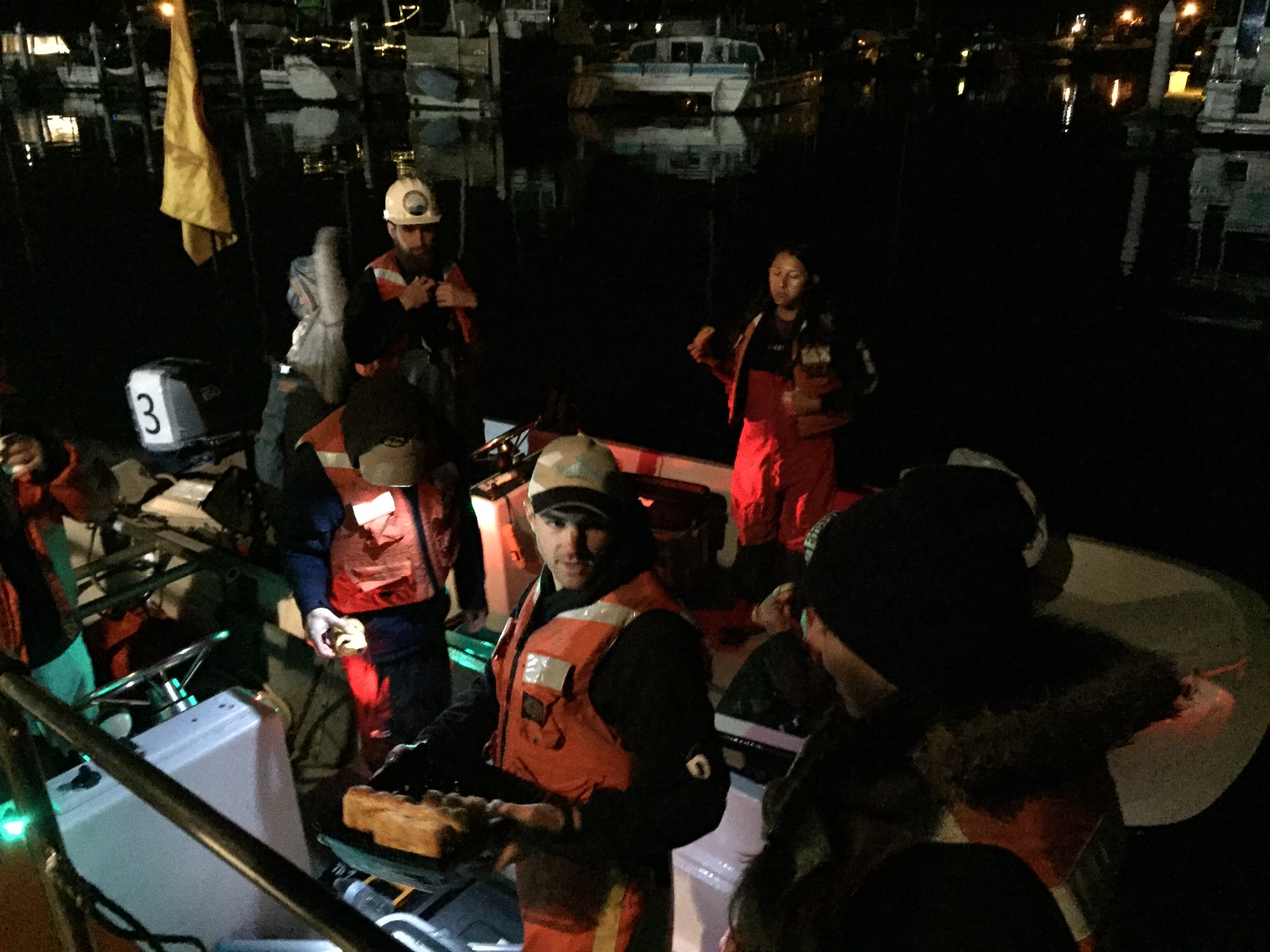
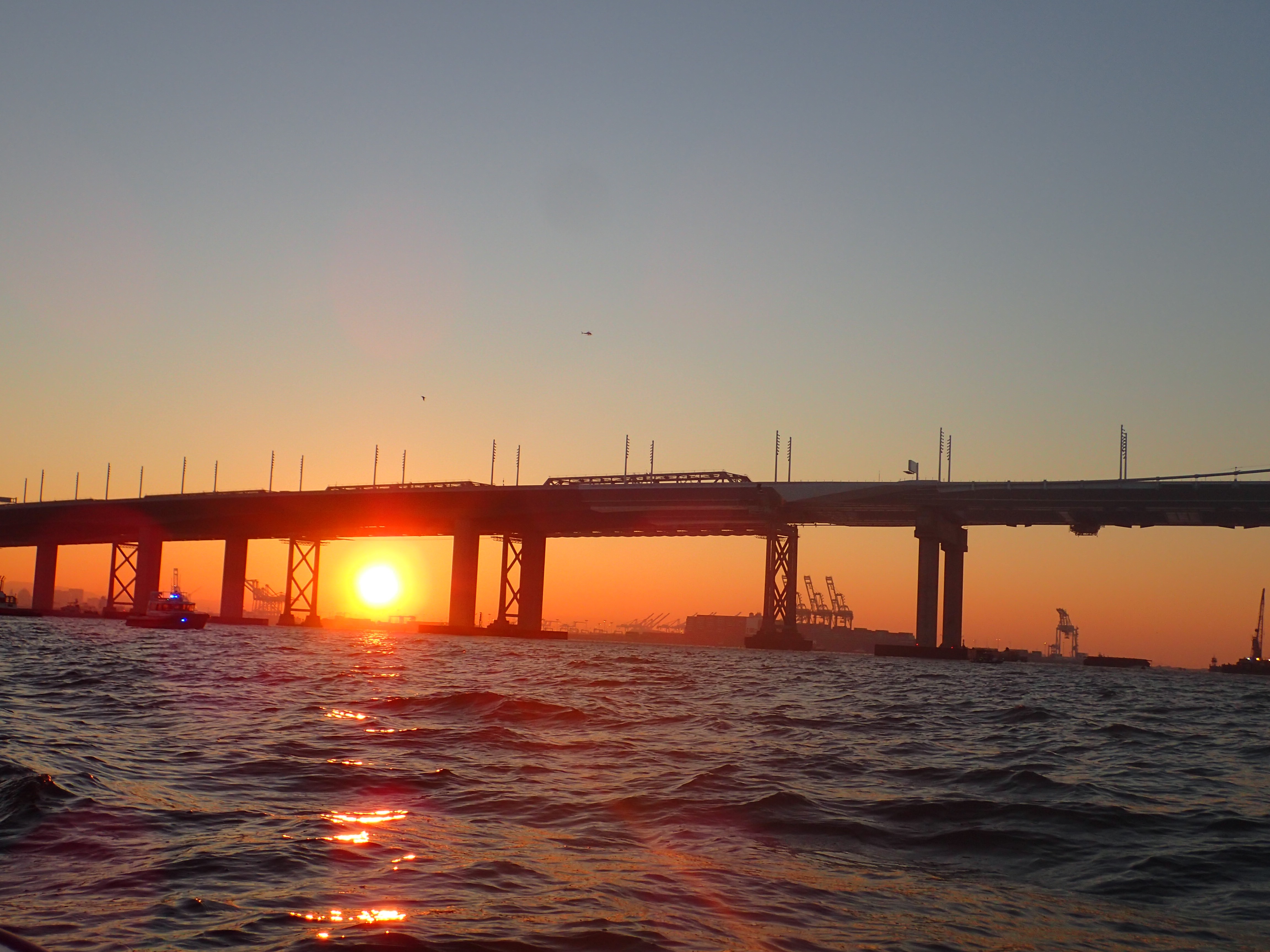
After arriving at the bridge on time, we spun in circles for a bit, had a photoshoot with the sunrise, watched yachts attempt to break past policing vessels guarding the blast zone, watched helicopters arrive and bridge traffic stop, and waited for the airhorn and countdown that we were promised.

7:03 AM, our planned time, arrived, passed, and we became worried the project would be delayed. We were told that a number of issues (such as presence of marine mammals) could delay the blast to either the following slack tide, or tides on the next day, so we sat with our cameras ready and hoped for the best. Finally, we heard the countdown, which, instead of being a minute, was only 10 seconds. Luckily we were ready and were not disappointed by the blast.
[youtube https://www.youtube.com/watch?v=kbKBUn0H_RI]
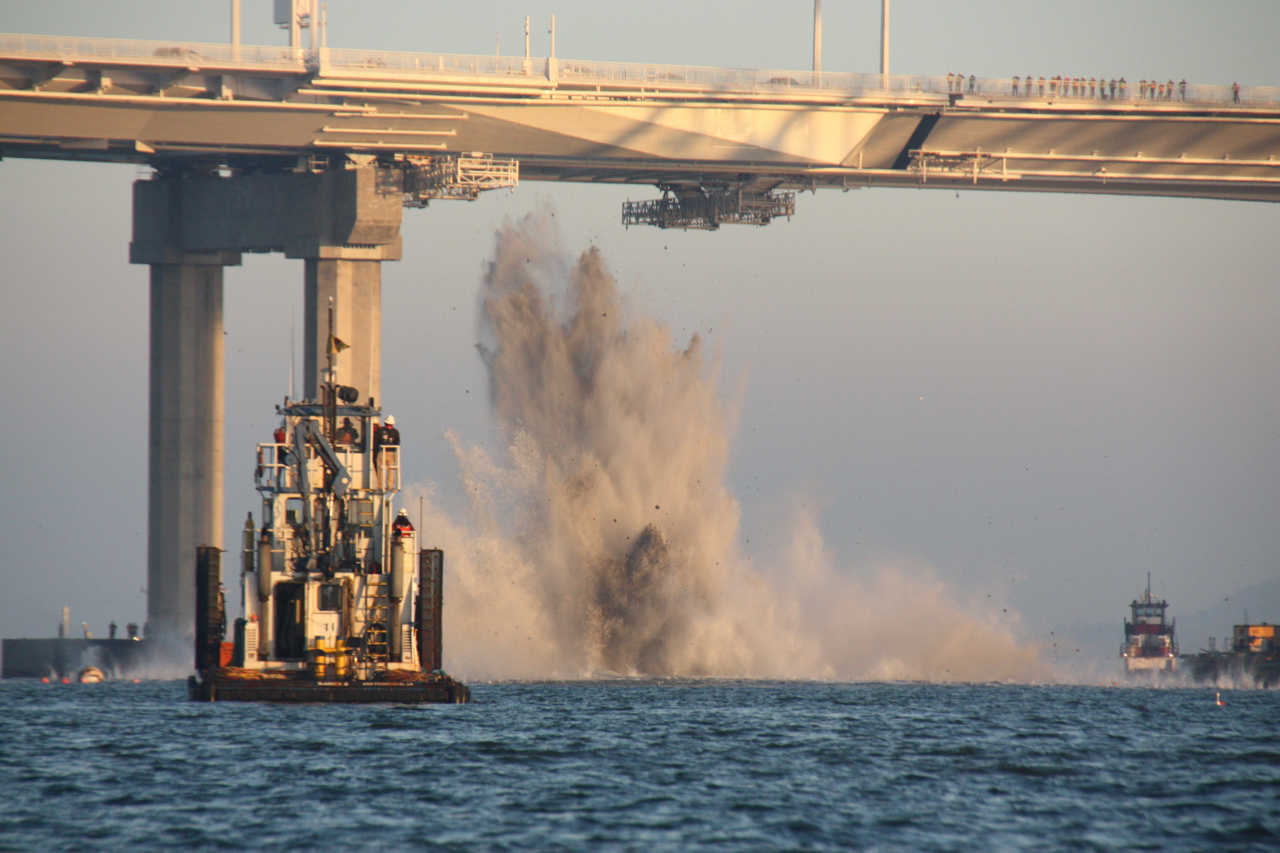
Right after the blast we began to trawl. All of the boats were successful in completing the minimum number of successful trawls, and we convened on the R/V John Martin for celebratory snacks, as well as to necropsy the fishes collected. Fishes were measured, weighed (some on an adorable mini-scale!), and evaluated for external damage, eye rupture, hemorrhaging, and organ damage.
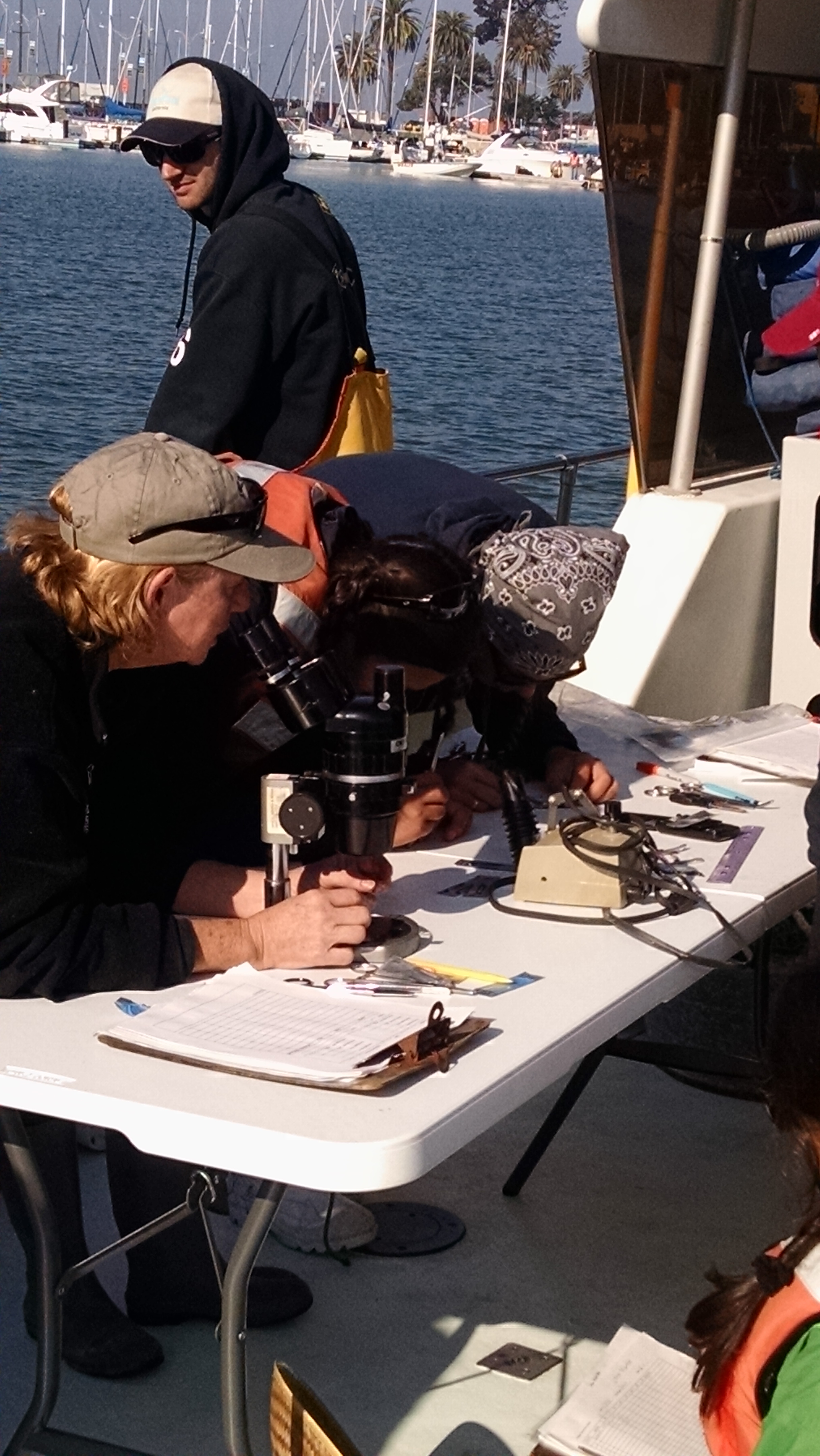
Our results will be evaluated by Caltrans, which will, along with results from other contractors, contribute to their decision for how to handle demolition of remaining bridge infrastructure.
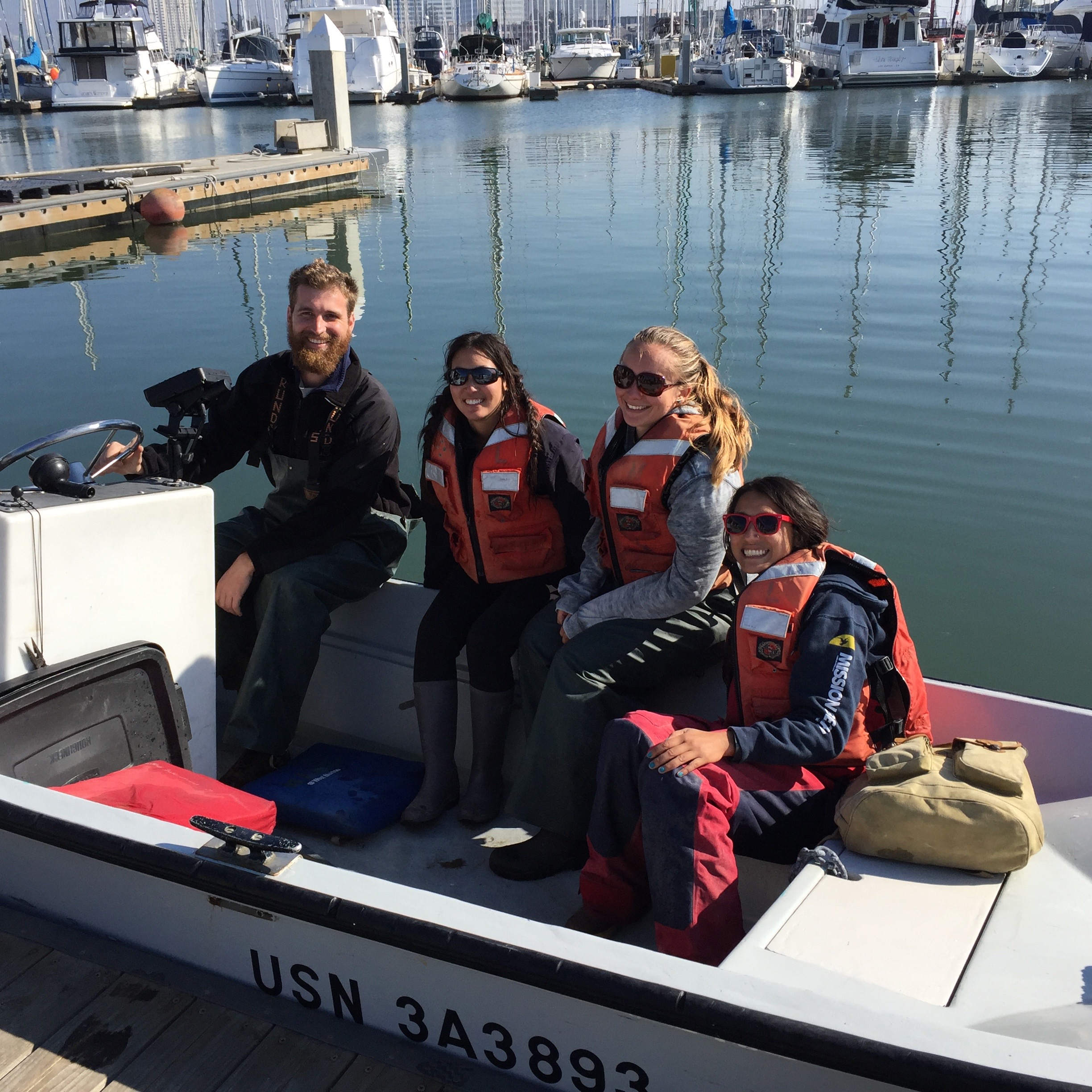
Thanks to Caltrans for allowing us to gain this experience, Drs. Rick Starr and Scott Hamilton, John Douglas, and everyone who was involved! Hopefully our data will help inform Caltrans with the removal of the rest of the bay bridge, and we will stay tuned to watch how they proceed.

